Driving classic cars can be a funny thing. Often going into it, one has a whole raft of preconceived notions about not only the car, but the marque and the era in which the car was made. For example, if you go to drive a ’69 Dodge Charger, you more than likely expect it to be loud, crude, and horrible in the corners and on the brakes. Those preconceived notions, though, can lead to some real surprises, as was the case in the hills outside Bologna, where we drove a pair of classic Lamborghinis.
Make no mistake, modern Lamborghinis – Gallardo, Huracan, Murcielago, Aventador – are largely fantastic to drive. They’ve got all the sound and fury you’d expect from the brand, but they’re usually as willing to do a commute as carve a canyon road. Classic Lamborghinis have a reputation for being unwilling to do either of those things, instead functioning more as loud, expensive devices to be seen in by others. This was what I expected when I contorted my 6-foot, 4-inch frame into the final production Diablo SE for the first time. It is not, however, what I got…
2001 Lamborghini Diablo 6.0 VT SE
The 2001 Lamborghini Diablo 6.0 VT SE was conceived as a farewell to the model before the much more modern (and more Audi-fied) Murcielago debuted. It’s a best of the best of Diablo, with a 550-horsepower 6.0-liter V12 (the second most-powerful fitted to the model, behind the Diablo GT), VT all-wheel drive, and the Luc Donckerwolke-designed facelift bodywork, complete with its Nissan 300ZX headlights.
Lamborghini made 42 examples, available in either “Oro Elios” gold or “Marrone Eklipsis” which is sort of an oxblood with bronze flake in it. The final example, which has never left Lamborghini’s hands, is the former with a gorgeous dark brown leather interior.
The first surprising thing about the Diablo SE is how relatively roomy the passenger accommodations are. Headroom is short, but if you’re riding in the right seat, even at my size, there is a decent amount of legroom, and shoulder room is also nothing to sneeze at. As a driver, this is hampered by the steering wheel, naturally, but I was able to fit, if not comfortably, at least well enough to operate the vehicle without too much difficulty.
Speaking of operating, the basics of puttering around in the Diablo are also unexpectedly simple. The clutch, while heavy, is easy to modulate, and thanks to the big V12’s 457 pound-feet of torque, I didn’t manage to stall the car once. This is not true of the other cars I drove, but more on that later.
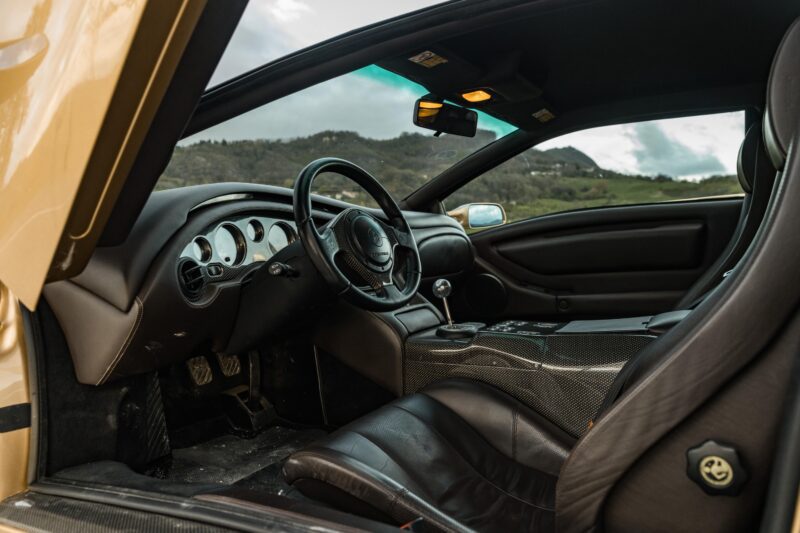
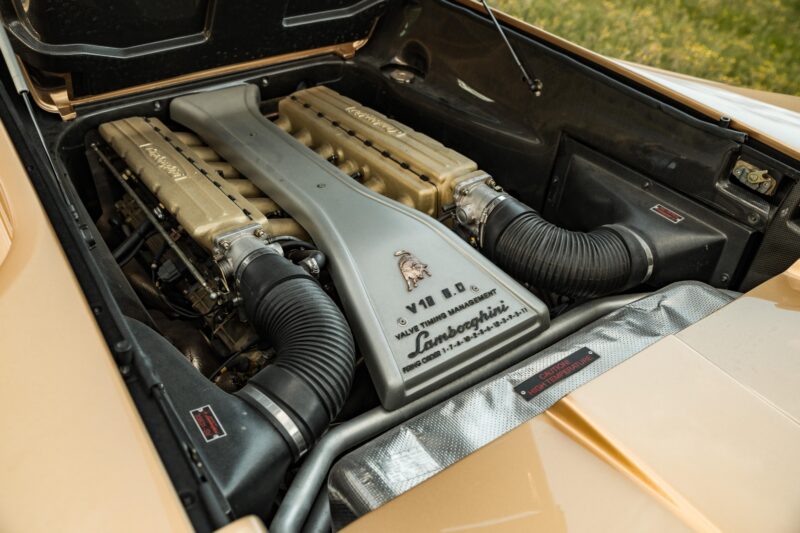
The gearbox is closer to what I expected it to be – stiff, and somewhat agricultural (insert tractor joke here) – but once warm, the effort required tapers off somewhat, and it becomes a direct, pleasurable thing to use. It’s somewhat odd that it’s only a five-speed, but with the engine’s grunt, five long gears feel like plenty.
That drivetrain, too, is incredible. There are some cars that seem to have been built around an engine, where, when you climb the rev counter, the engine seems to wake the entire car up and makes it feel alive. To paraphrase stock car driver Darrell Waltrip describing his 1970s Monte Carlo, the Diablo is “all ate up with motor.” There are a few reasons that Lamborghini stuck with this engine from 1963 until the Aventador: it’s brilliant.
Arguably, the biggest surprise about the Diablo is its steering. It’s power-assisted, but still very weighty and pleasantly direct. You’re not really fighting it as I’d expected I might have to in parking situations, and it gives the Diablo the flavor of being a bit of a driver’s car. It’s not what I’d call nimble, by any means, but on the curvy roads leading up to the Passo della Futa, it feels like a willing participant.
Other niceties for the SE include a distinctly usable front trunk space, working air conditioning (which was a blessing on a 90-plus-degree day with 85% humidity), reasonable visibility everywhere except directly behind you, and a firm but not harsh ride. The last one was even tested on a road under construction, i.e., a poorly finished gravel track. The car is also not so low to the ground that it has issues scraping anywhere. It feels borderline blasphemous to say this, but the Diablo seems to be a usable supercar.
1967 Lamborghini 400 GT 2+2
The Diablo isn’t the only car I drove during this experience, and the 400 GT 2+2 couldn’t be more different. It’s clear that not only was the 400 GT designed with a very different mission in mind, but that 40 years of development separate it from the Diablo SE.
Where the Diablo is meant to be an angry, rampaging bull of a car (see what I did there?), the 400 GT 2+2 is part of Ferruccio Lamborghini’s original vision to out-Ferrari Ferrari. It’s long, low, and beautifully proportioned. As a grand tourer, it’s softer, more elegant and spacious than the mid-engine cars that came later. It also has the most profoundly Italian driving position I’ve ever experienced.
When I say “Italian driving position,” what I mean is that the steering wheel is closer to your chest than seems prudent, and your legs are stretched way out in front of you. As I mentioned earlier, I’m 6 feet 4 inches tall, and with the seat adjusted so that I could work the wheel somewhat normally, I couldn’t push the clutch all the way to the floor. It’s not so bad once you get onto the autostrada, where the 400 GT is meant to thrive, but in any kind of traffic, it’s somewhat disconcerting.
Also disconcerting is the fact that the 3.9-liter version of the corporate V12 isn’t particularly torquey, so the car requires a lot more revs to get around at low speeds than you might expect, especially coming from a later model. Add in the fact that this particular 400 GT had something going on with its fueling at low speed, that caused it to bog down and not rev under load, and I’m not ashamed to say that hill-starting this car was terrifying. Having the final Countach to ever roll out of Sant’Agata right behind me didn’t make it any better.
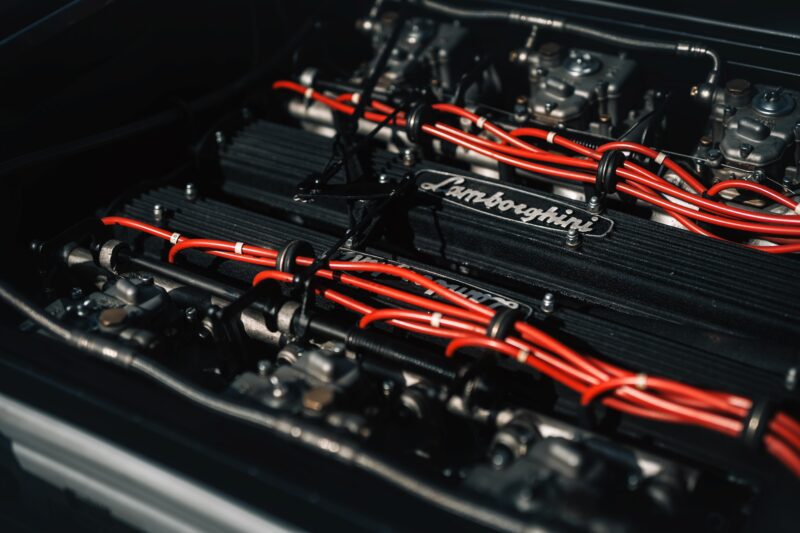
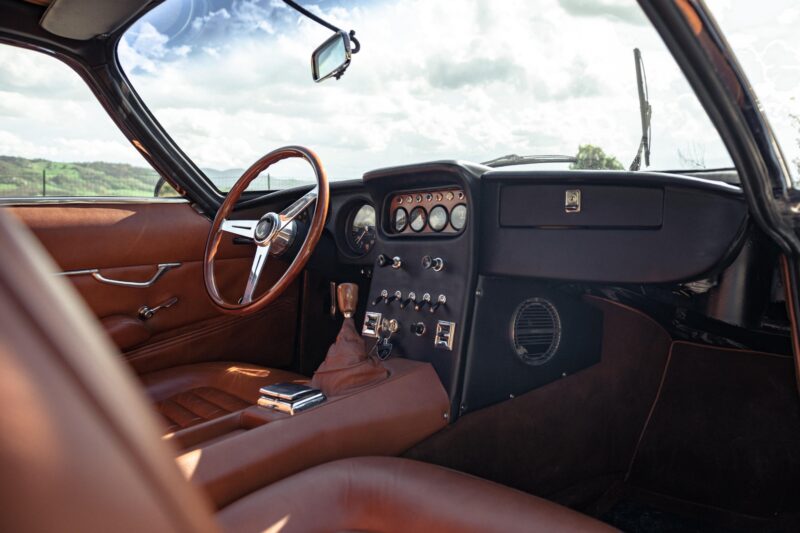
The issue with the car’s six Weber carbs notwithstanding, the 400 GT is a beautiful thing to drive once it’s allowed to stretch its legs. Its four-wheel disc brakes and five-speed gearbox feel extremely modern compared to other vehicles from the late 1960s. The gearbox, like that of the Diablo, feels weighty but direct, and even without the Diablo’s gated shifter, I never miss a gear.
The car’s soft suspension and heavy, unpowered steering feel appropriate for the time and purpose and don’t detract from the pleasure of the drive. This is no sports car, mind you, but it feels nimble enough to make an alpine pass enjoyable.
The interior is a sea of butter-soft tan leather and metal accents. It’s sensibly laid out, and even the switches on the dash are sort of labeled, something that was not a guarantee for Italian cars of the era. The car’s greenhouse and spaghetti-thin pillars make seeing out easy, though in the Italian summer heat, it also lets me experience what the inside of an Easy-Bake Oven is probably like.
The 400 GT’s beautiful Superleggera bodywork by Touring feels like the antithesis of all the brutal Gandini-penned cars that came later, save the Miura. My experience with vintage Ferraris is sadly limited, but I’ve heard from enough people I trust that they drive like trucks. The 400 GT drives like it looks. It’s a gorgeous thing, and I’ve spent more time than I care to admit daydreaming about blasting from Sant’Agata to the Amalfi coast in it. The world’s highest mileage Lamborghini is a 1967 400 GT with nearly 300,000 miles on it, and driving this one, it’s easy to imagine racking up those kinds of moon miles.
The takeaway from this once-in-a-lifetime driving experience is this: old cars, especially ones like these vintage Lamborghinis, expect you to make sacrifices. They are less apt to bend to your will, and instead, you’ll need to adapt to their many quirks and foibles. If you fight them, you’ll lose and have a miserable experience. If you acquiesce to their demands, however, they will transport you to a different time and place and make you experience the world on new terms.
I’ve always had a soft spot for Lamborghini
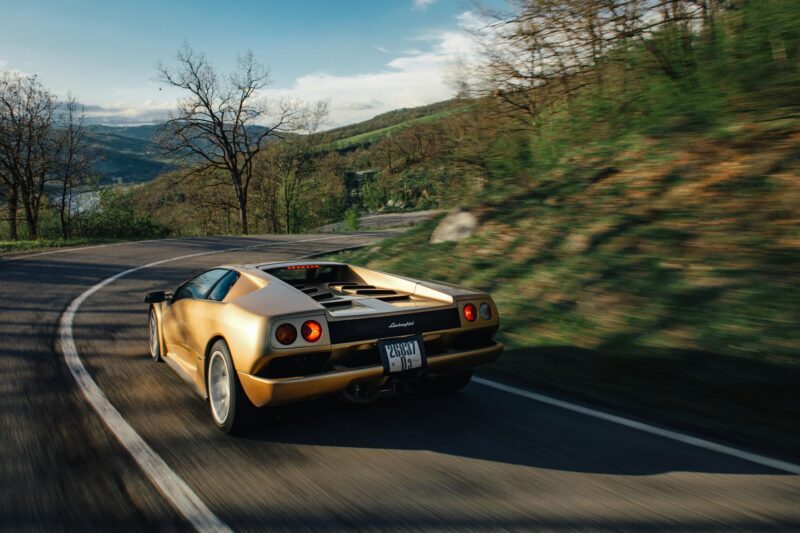
My first supercar experience as a journalist was in a Huracan Evo Spyder, and since then I’ve driven a Sterrato at full chat in deep sand, taken an Urus Performante up Pikes Peak, and more. These older cars represent a very different time in the company’s history, but having driven them in the place they were conceived and built, I very clearly see the throughline to those later cars and even to the new hybrid models like the Revuelto.
People may have been worried that Lamborghini would lose its character when it was purchased by Audi, but that hasn’t happened, and with unprecedented levels of financial stability and talented, passionate people at the helm, I’ve got no fear that the spirit that inhabits the 400 GT and the Diablo will ever truly disappear.

